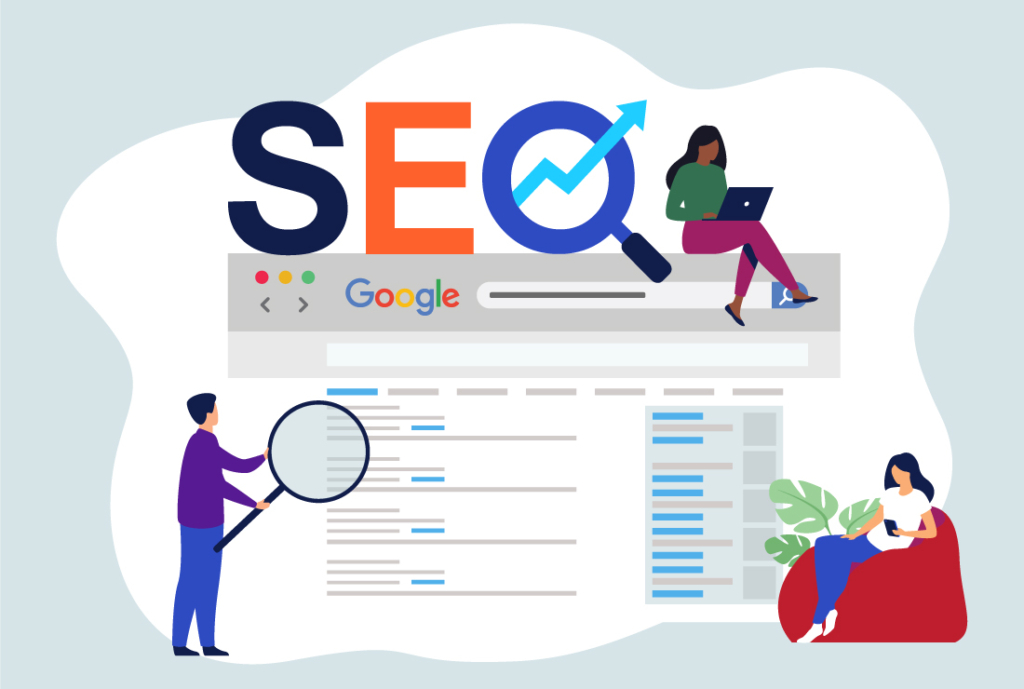
For your business’s website to be found, you need to be ranked highly and indexed on major search engines. Implementing search engine optimization (SEO) practices ensures that your website is attracting website traffic with relevant search queries. But, what exactly is SEO and how does it work? SEO improves your website’s visibility across search engines such as Google, Yahoo, and Bing.
As a business, we want our websites to cater to our audience’s exact needs and interests, which we do through the content we are posting on our site, including page content, landing pages, and blog posts. Collectively we do this through SEO optimization. Search engine optimization can help your website rank higher on search engines. Read on to see our top tips on how you can optimize your website’s SEO and make sure your content is reaching the right audience.
Tip #1: Publish fresh relevant content to improve your ranking.
Content is how we communicate with an audience. Bringing relevant content to the table helps to create a level of trust and authenticity with your brand and your audience. When posting relevant content, this shows new and existing users that you are able to cater to their needs. Listening to your audience is a great way to guide the content you are creating. You can use this opportunity to answer their questions and give them a better understanding of your business. Search engines reward sites that provide a good user experience.
Tip #2: Are you updating your website content regularly? You should be!
Fresh or regularly updated content sends signals to search engines that you are regularly interacting with your website and committed to providing customers with up-to-date details. One incredibly valuable thing you can do is update your content on a regular basis! Keeping your content up to date for search engines and consumers helps to ensure the content you are putting out there remains relevant and up to date. Algorithms are always changing and updating, which in turn means page requirements are also shifting. A Google ranking algorithm, “content freshness,” affects 6-10% of search results while favoring fresh page content.
Can you imagine going to a new website and seeing an offer from 2 years ago that is no longer applicable? How stressful! You want to be sure you are going in and updating important information (especially dates!) and removing anything that is no longer relevant. Many businesses’ website rankings are drastically affected by not updating existing content on a regular basis.
One easy way to keep your website updated is to add a blog. Publishing blog posts on a monthly basis is a great way to get fresh content on your site and demonstrate your expertise in your industry. Another perk of a blog? It’s valuable content to share out on your social media channels.
Tip #3: Why your content strategy should include having a link-worthy site.
Links play an essential role in your website’s SEO. Outbound links are critical and beneficial when stating a fact, statistic, or citing a source. How can links help improve a site’s SEO? Sharing relevant and helpful articles and information increases trust in your brand, both among your website visitors and Google. What exactly should you look for in a quality link?
- Seek trustworthy sources, such as local, regional, or national news outlets. Consider info from .gov and .edu domains, too.
- Make sure the source is relevant to your content. The authority of your source is less important if it’s not related to your content.
- Link diversity is important, too. Use a variety of sources, such as high-quality blog posts, news sources, website directories, or local organizations like a Chamber of Commerce.
Tip: Alt tags and their role in the fundamentals of SEO.
Alt tags (along with title tags and meta descriptions) are some of the fundamentals of on-page SEO. Also known as alternate descriptions, alt tags describe what an image is and what a person is viewing on a page. This text makes it easy for search engines to understand the images and rank your site. Google also pulls in clickable images above the organic text results, in addition to the images shown in the Images tab. Omitting alt tags means that you could miss out on some major organic searches. Another benefit to incorporating alt tags is that they’re used by screen reading tools for users with visual impairments. Alt tags are an important component of website accessibility.
How to write a good alt tag? The key to good alt tags is a thorough description of the image (while still being short!) that includes keywords. Alt tags give you an added opportunity to include on-page keywords. If it makes sense within the context of the image, you should try including keywords in these descriptions (however it is important not to keyword stuff a description!) Keyword stuffing your alt tags diminishes the value of your tags and may cause a Google penalty. You can add and edit alt tags within your content management system.
Need a little support elevating your brand? Contact Stellaractive for your website and marketing needs!
Stellaractive is a strategy-driven creative agency in Portland, Oregon. We help companies elevate their brand through websites, print, branding, and digital marketing solutions that connect, engage, inform, and inspire. We’ve been helping clients across the U.S. build their online presence for more than 15 years, and we can help you, too. Request a quote or call us at 503-384-2413 today!